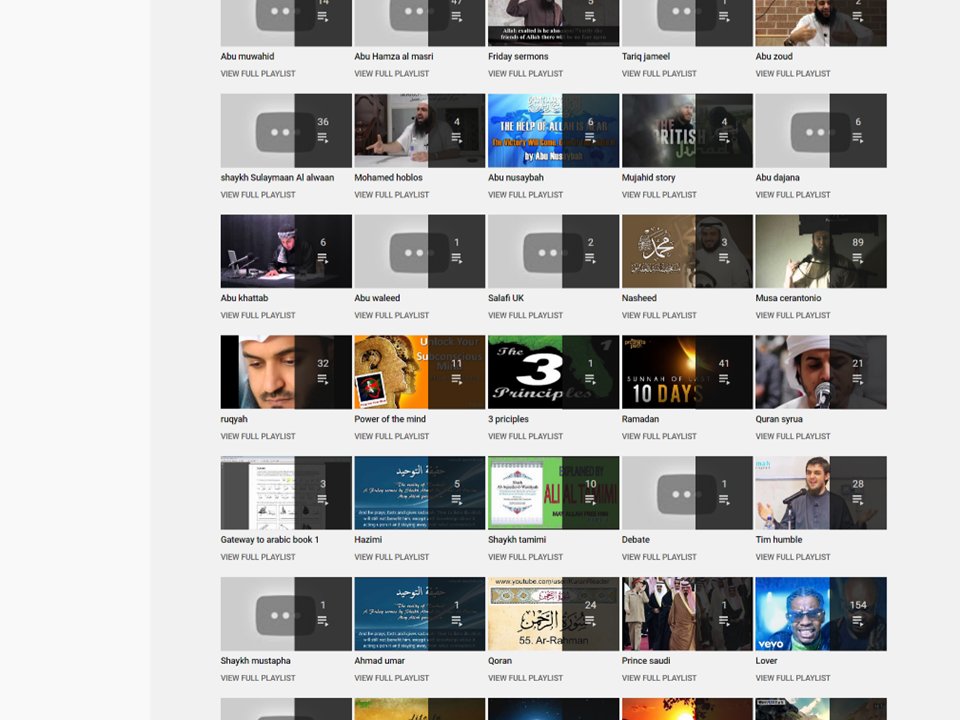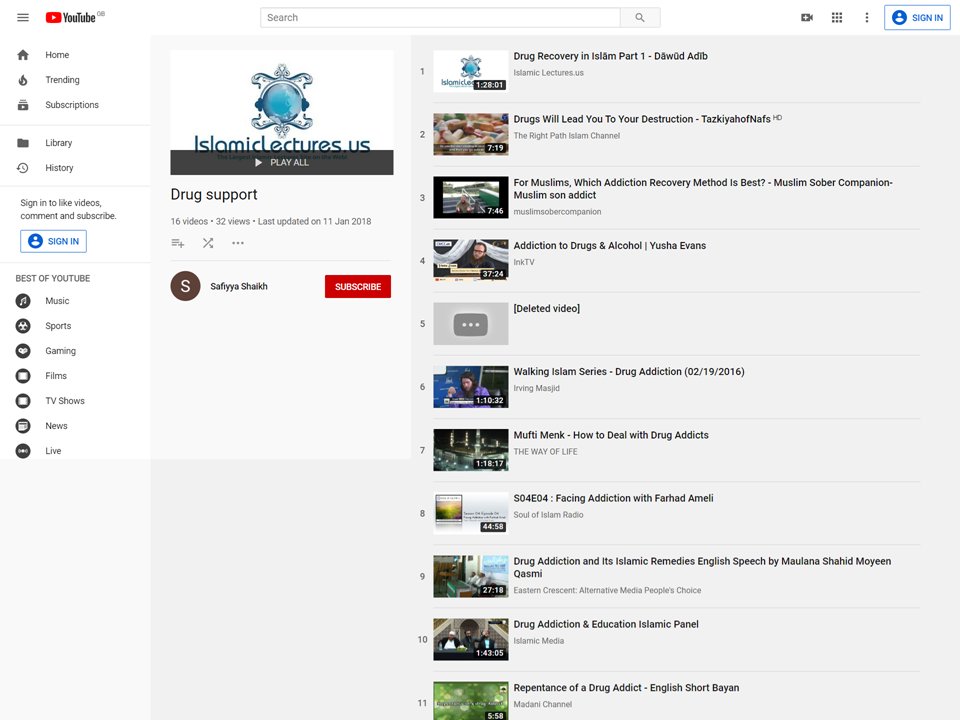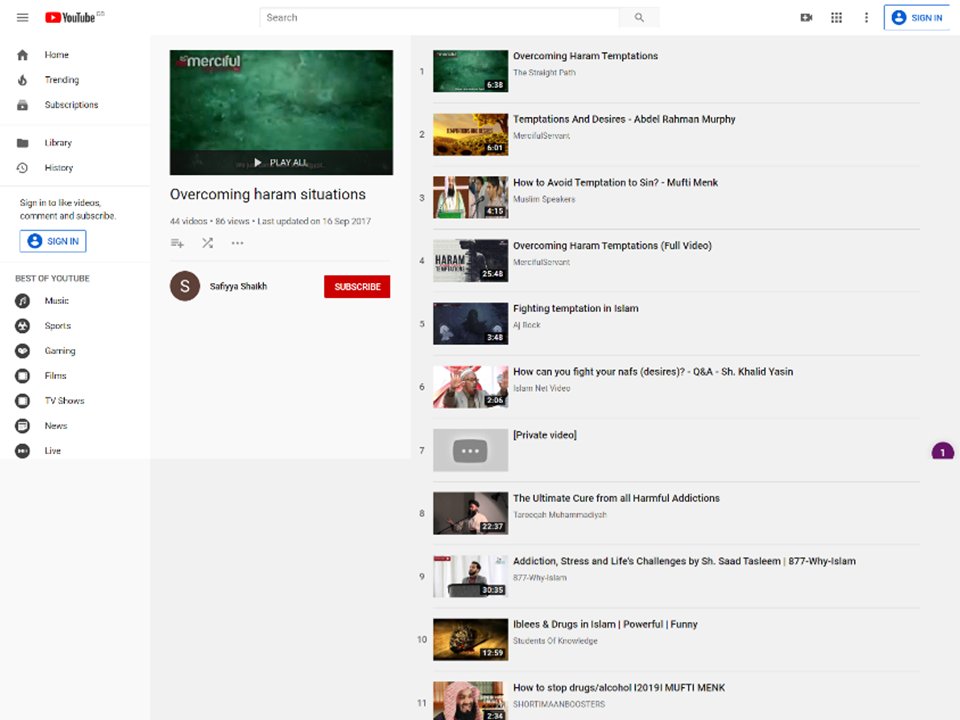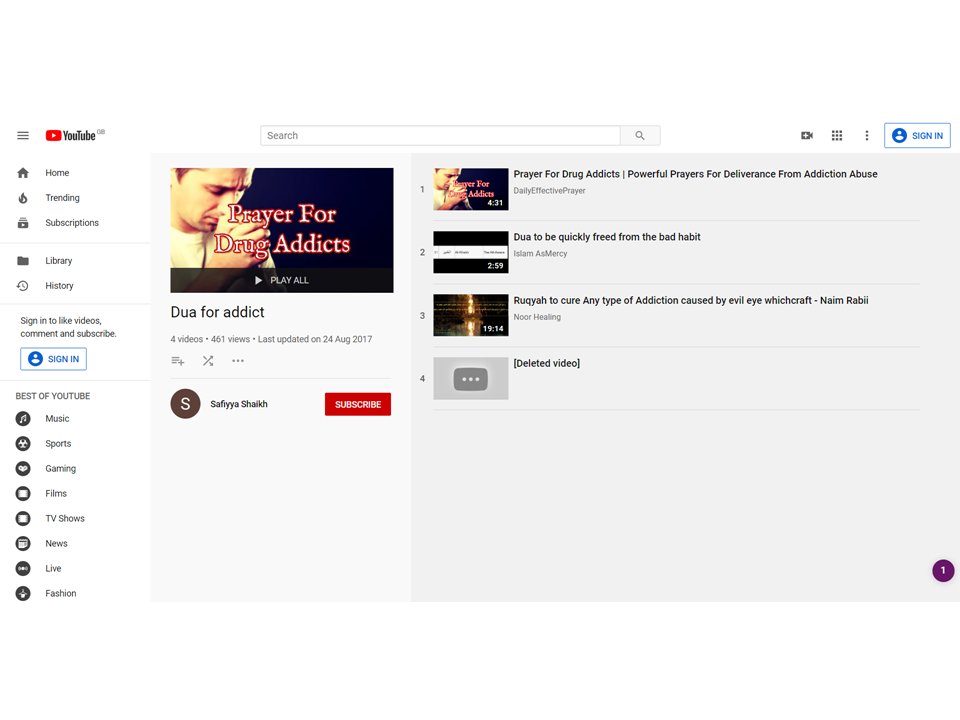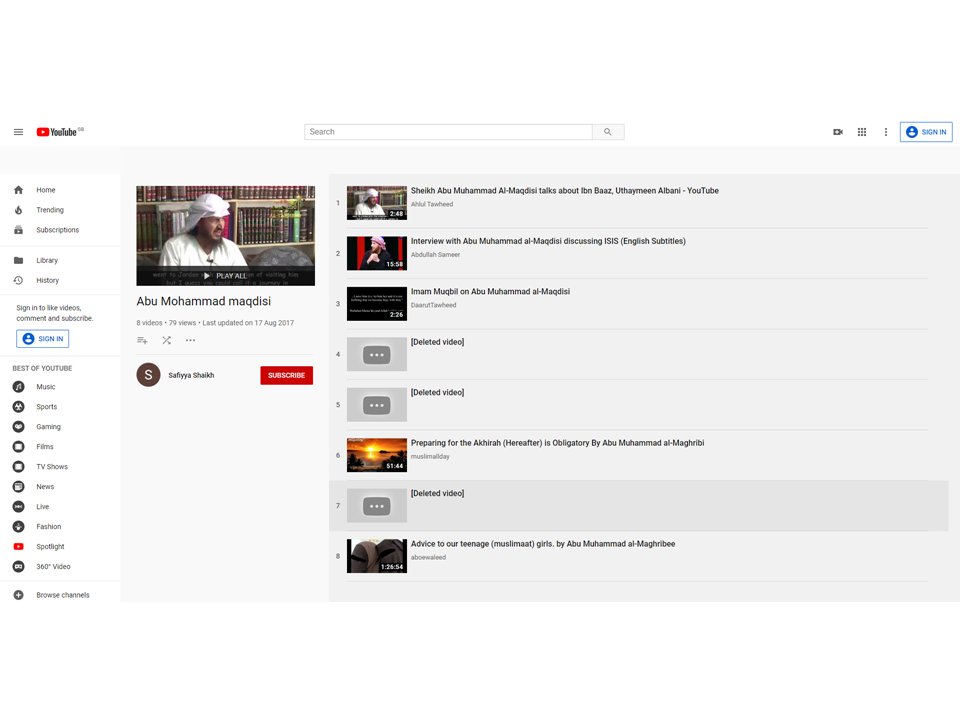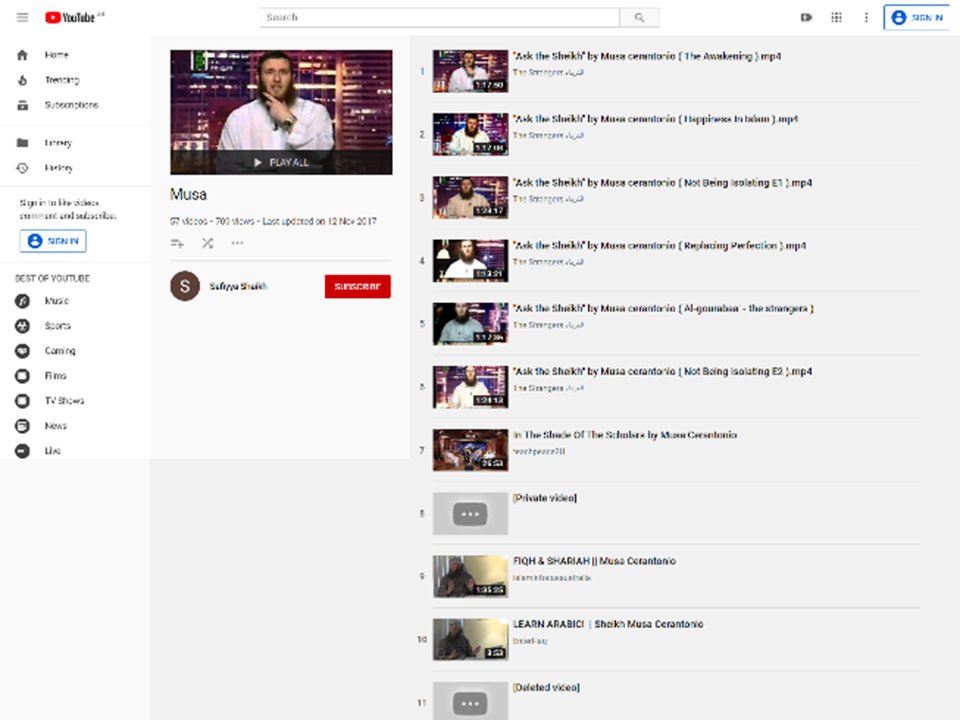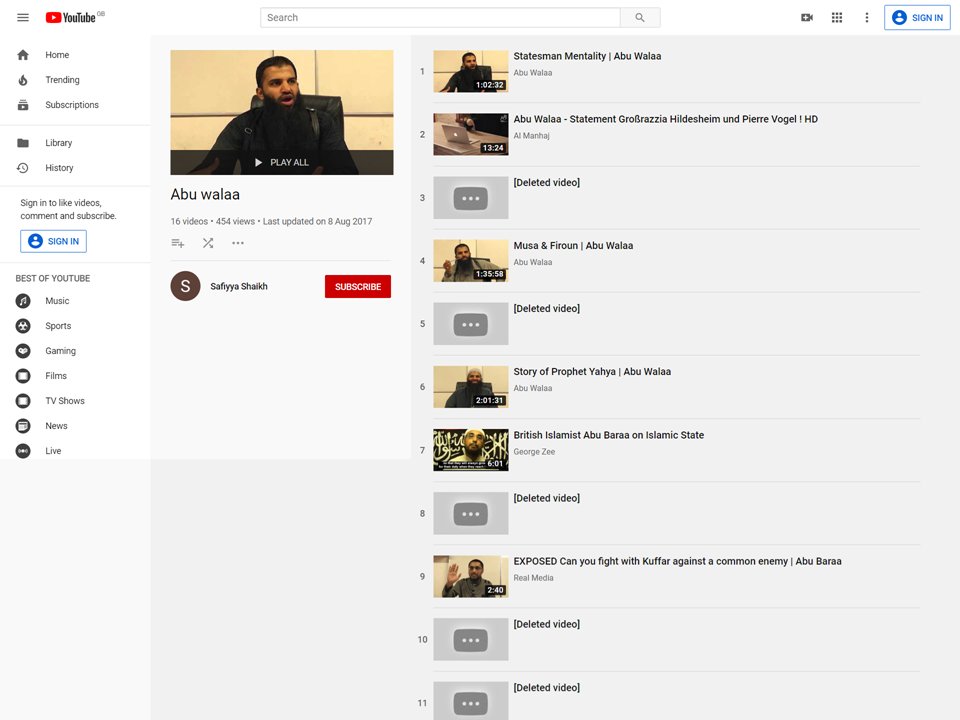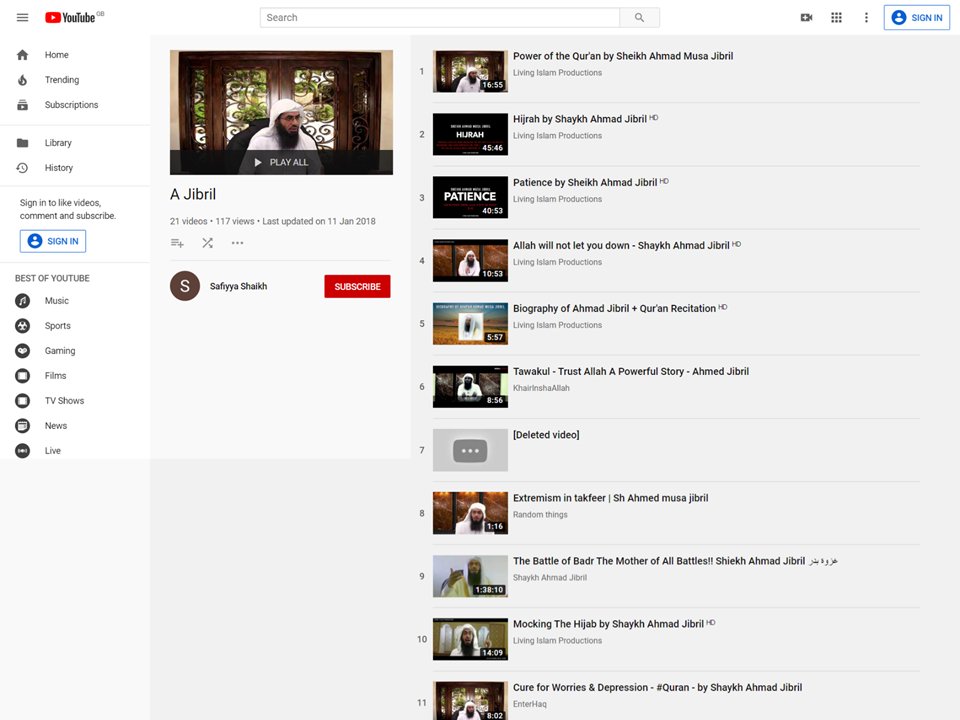Today Saffiya Shaikh, a 36-year-old jihadist convert, was sentenced to life for trying to blow up St. Paul's Cathedral.
Last year I came across her YouTube profile.
So what do her browsing habits reveal about her radicalisation?
Turns out, quite a lot:
Last year I came across her YouTube profile.
So what do her browsing habits reveal about her radicalisation?
Turns out, quite a lot:
2/ She made playlists, and lots of them: 89 over the course of 12 months. That's almost one every four days.
So she spent a lot of time consuming this - mostly extremist - material.
But it also shows us what was happening in her life.
So she spent a lot of time consuming this - mostly extremist - material.
But it also shows us what was happening in her life.
3/ She was addicted to drugs (heroin) and looking for answers, all framed through her faith.
It might seem strange that a jihadist would be taking drugs.
They're supposed to be pious, right? Not always. Jihadists taking drugs is more common than you may think.
It might seem strange that a jihadist would be taking drugs.
They're supposed to be pious, right? Not always. Jihadists taking drugs is more common than you may think.
4/ She also appears naive, gullible, and lacking in critical thinking skills.
One playlist was called 'Magic', with videos saying you can change the colour of your eyes by listening to certain sound frequencies.
You can't do this, but she seems to have tried.
One playlist was called 'Magic', with videos saying you can change the colour of your eyes by listening to certain sound frequencies.
You can't do this, but she seems to have tried.
5/ Shaikh was also isolated from her family. Converts often find their new lives to be difficult.
Her relationship with the father of her child also didn't work out well.
She created a FB page and met other convert 'sisters', but was soon ostracised for her extremist views.
Her relationship with the father of her child also didn't work out well.
She created a FB page and met other convert 'sisters', but was soon ostracised for her extremist views.
6/ Put all of these things together - her drug use, social isolation, and naivety - and you have someone who could be "vulnerable" to extremist messaging.
So she watched videos.
Abdallah Azzam, Osama bin Laden, Abu Muhammad al-Maqdisi, and more
Basically a jihadist "who's who"
So she watched videos.
Abdallah Azzam, Osama bin Laden, Abu Muhammad al-Maqdisi, and more
Basically a jihadist "who's who"
7/ But a lot of that "old school" material is pretty dull. It's in Arabic, old, and doesn't cater to a "Western" audience.
So who did watch more than anything?
Videos from the "new school" of radicalisers. They live in the West, speak English, and pump out *a lot* of content.
So who did watch more than anything?
Videos from the "new school" of radicalisers. They live in the West, speak English, and pump out *a lot* of content.
8/ Which makes you wonder: If all that all that extremist content was - and remains - so accessible on YouTube, why haven't they taken it down?
Well, much of it is presented in a careful way that doesn't explicitly incite people to carry out attacks.
Well, much of it is presented in a careful way that doesn't explicitly incite people to carry out attacks.
9/ There was nothing on her YouTube from Anwar al-Awlaki, a notorious radicaliser.
In 2017, YouTube banned *all* content from him, regardless of message (his most popular videos were not actually extremist).
Maybe they'll do that with other extremists too?
In 2017, YouTube banned *all* content from him, regardless of message (his most popular videos were not actually extremist).
Maybe they'll do that with other extremists too?
10/ One question sticks out:
Why did she move from being a supporter of jihadism, watching videos online, to actually wanting to *act*?
That's a question that terrorism researchers like myself have difficulty answering.
Was she tired of watching from the sidelines?
Why did she move from being a supporter of jihadism, watching videos online, to actually wanting to *act*?
That's a question that terrorism researchers like myself have difficulty answering.
Was she tired of watching from the sidelines?
11/ It was not inevitable she would carry out an attack, even with her "vulnerabilities".
Maybe "prevention" programs could've worked a few years ago, earlier in her radicalisation.
But as soon as she wanted to kill others? You have to lock dangerous people like that up.
Maybe "prevention" programs could've worked a few years ago, earlier in her radicalisation.
But as soon as she wanted to kill others? You have to lock dangerous people like that up.
12/ Safiyya Shaikh's case is, genuinely, a fascinating one.
You can read more about it, from @BBCDomC, here: https://www.bbc.co.uk/news/uk-53264640
You can read more about it, from @BBCDomC, here: https://www.bbc.co.uk/news/uk-53264640
END/ I hope this thread has been useful in exploring some of the nuances about radicalisation. You can read this thread here:
https://gnet-research.org/2020/06/22/the-youtube-browsing-habits-of-a-lone-actor-terrorist/
COMING SOON: later this month I'll be publishing research on how prisons manage extremists, so watch this space.
https://gnet-research.org/2020/06/22/the-youtube-browsing-habits-of-a-lone-actor-terrorist/
COMING SOON: later this month I'll be publishing research on how prisons manage extremists, so watch this space.

 Read on Twitter
Read on Twitter


